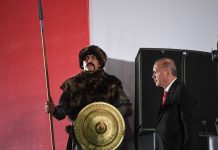India’s push to reform its military — the world’s fourth-largest — consolidating all 19 commands into five major theater commands has hit the wall.
In the absence of any consensus on the structure of military theater commands, the Defense Ministry has constituted a committee to resolve internal differences.
The members include vice chiefs of the Army, Navy and Air Force, Chief of Defence Staff (CDS), and representatives of various ministries such as defense, home, and finance.
The committee will be directly involved in bringing together all three services — IAF, army, and navy — under a joint operational system, as seen in American and Chinese militaries. The move is aimed at conducting training, equipment, procurement, and logistics together.
At present, India has only one tri-services command — the Andaman and Nicobar Command. There is also a Strategic Forces Command, which oversees the country’s nuclear arsenal.
Progress on Theater Commands
India moved one step closer towards integration of armed forces when in January 2020, former Army chief General Bipin Rawat was appointed as the Chief of Defence Staff (CDS) to head the newly created Department of Military Affairs.
However, security experts have often cited the complexities and limitations to his powers in matters related to tri-services. For instance, the CDS is not the commander of all the armed forces of the country.

In December that year, General Rawat himself admitted to facing problems in bringing in reforms.
“We have to have an understanding of each other’s services,” he had said.
According to the proposal, two unified theatre commands were to be set up under General Rawat’s supervision this year. One was the Air Defense Command led by the Air Force and the other was the Maritime Theater Command by the Navy.
Three other joint theatre commands mentioned in the proposal include the Jaipur-based Western Command that will cover the entire western border up to the Line of Control (LOC) with Pakistan, the Lucknow-based Northern Command covering the border with China from Ladakh to Arunachal, and the Peninsular Command merging the eastern and western navy commands — all proposed to be rolled out by the end of 2022.
General Bipin Rawat #CDS visited forward #AirForce bases in #EasternSector & interacted with #IndianArmy, #ITBP & #SFF soldiers deployed at the forward most air maintained post in #DibangValley & #LohitSector of #ArunachalPradesh. (1/3) pic.twitter.com/cD8BGhQiIz
— ADG PI – INDIAN ARMY (@adgpi) January 2, 2021
In an article, The Eurasian Times Consulting Editor Prakash Nanda highlighted the problems being encountered in ironing out the differences between the three services.
He raised certain questions regarding the process that continues to plague the necessary military reforms and also figured in the latest high-level meeting in the Ministry of Defense.
Turf Wars
The surrender of their respective ‘turfs’ by each stakeholder remains one of the contentious issues. Major differences on turfs emerged in the last meeting at the Ministry of Defence, as reports suggest. For instance, the Indian Air Force has been skeptical of sharing “limited assets” with other commands.
Overlapping Ministries
The Ministry of Defence overlooks the three military services and is the central player in the negotiating process. The Ministry of Finance is naturally involved due to cost-cutting and budgeting exercises, one of the prime reasons to create military theaters.
What makes the issue more complex is the proposal to hand over operational control of the border guarding forces — the Border Security Force (BSF) and the Indo-Tibetan Border Police (ITBP) — to the specific theater commands. These forces come under the Ministry of Home Affairs.
?Former Northern Army Commander Lt Gen Deependra Singh Hooda (Retd) said that it would make sense to place the #ITBP under operational control of the #IndianArmy . #IDU #teamIDU pic.twitter.com/YZHAGZ9ehM
— IDU (@defencealerts) June 18, 2021
Hierarchical Structure
Each of the proposed theatre commands will be headed by a theater commander, who will be a three-star military officer — Air Marshal, Lt. General and Vice Admiral.
This places them above the vice chiefs of respective military service, complicating the military hierarchy.
Another issue that has come to light is the decision on whether the theater commands should be based on challenges or country-specific, as reported by The Print.
The purpose of a unified theatre command is to be prepared for a joint war strategy. Amid the ongoing Ladakh standoff, the sooner the government and military top-brass can bring all stakeholders on the same page, the better it might be for India’s China problem.
READ MORE
- Watch: The Ultimate Dogfight Between US & Russian Fighter Jets Over A ‘Top-Secret’ Air Base In Nevada
- Why India’s Ladakh Region Is Crucial For China’s Rise As An Economic Super-Power?
- 30 Times Faster Than Speed Of Sound: Is China Really Winning The Hypersonic Race With Its JF-22 Wind Tunnel?




